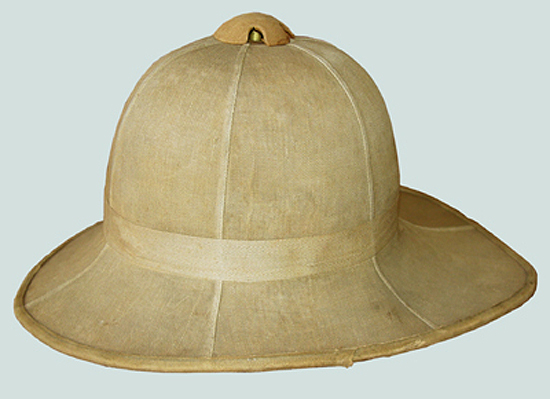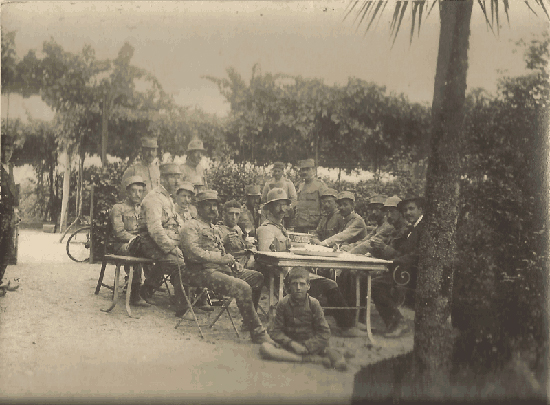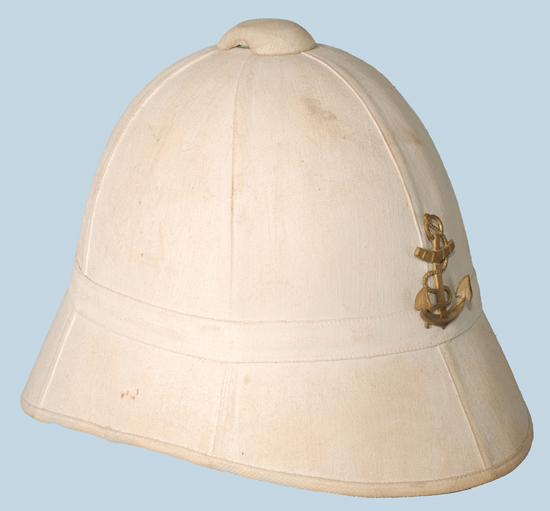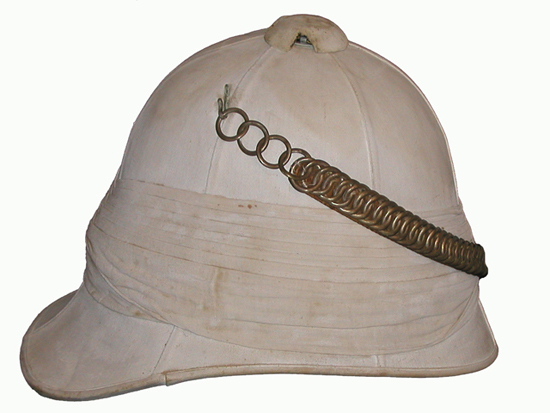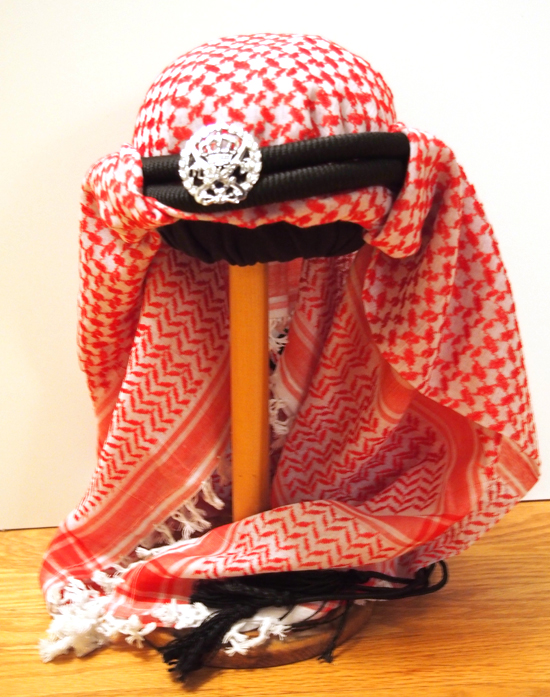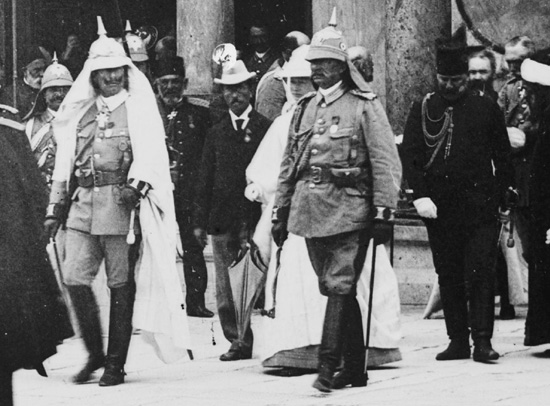When, in 1911, the Department of Militia & Defence (M&D) ordered the transition from the white Universal helmet to the white Wolseley pattern helmet they permitted existing pugarees to continue to be worn. This satisfied the need for regimental identities for most orders of dress. However, the 1904 introduction of drab Service Dress called for either a khaki cover to the helmet or a khaki helmet left the Militia with little opportunity for regimental expression. Continue reading
Category Archives: World War I
The Portuguese 1913 Helmet
The fall of the Portuguese Monarchy, on October the 5th 1910, brought about deep changes in Portuguese military uniforms. The very first measure, taken as early as October the 8th, was the abolishment of the use of royal crowns on the uniforms. In most uniform items, the royal crowns could simply be disassembled, but that was not always so. In buttons, the crowns had to be filed and in helmet front plates, they had to be cut. Most of the surviving helmets keep their front plates complete, so it is likely that this type of headdress was scarcely worn in the early days of the Republic. Continue reading
The French Colonial Pattern Helmet
Just at the colonial pattern sun helmet remains an iconic image of Britain’s “Soldiers of the Queen,” this style helmet was worn by the French forces in far flung conflicts. And whereas the British pattern seemed to evolve with numerous nuances and differences in a plethora of patterns and variations, the French military relied on basically two colonial patterns. Continue reading
Sun Helmet of Major C. Venables-Llewelyn of the Glamorgan Imperial Yeomanry
Objects of militaria are often a link back in time. However, all too often we hear, “if only this piece could tell its stories.” This of course will never happen, but occasionally we get lucky and are able to do some historical research and find out a bit more about a particular item. No longer do we think of a vague shadowy figure who may have worn the uniform, but we can find out a bit more about the original owner.
This is the case with a British Foreign Service Helmet, and storage tin that was once owned by Sir Charles Venables-Llewelyn of the Glamorgan Imperial Yeomanry. Inside the helmet are the stamped letters “C. V. L.,” whilst the tin is marked to a “Major C. Venables Llewelyn.” Continue reading
The Arabian Keffiyeh
The traditional Arab headdress is often – and quite erroneously – called a “turban.” While it may have a shared origin with the Indo-Pakistani turban, including the fact that both are made of cloth, and were originally worn to provide protection from the sun, these are two distinct types of headdress.
The Arabian head scarf is known as the ghutrah, shemagh, but most commonly is referred to as the keffiyeh. It is commonly worn in arid regions; usually is made of cotton and features a distinctive woven check pattern that is believed to have originated in ancient Mesopotamia. Continue reading
MAX Show 2012: Sun Helmets and Other Militaria
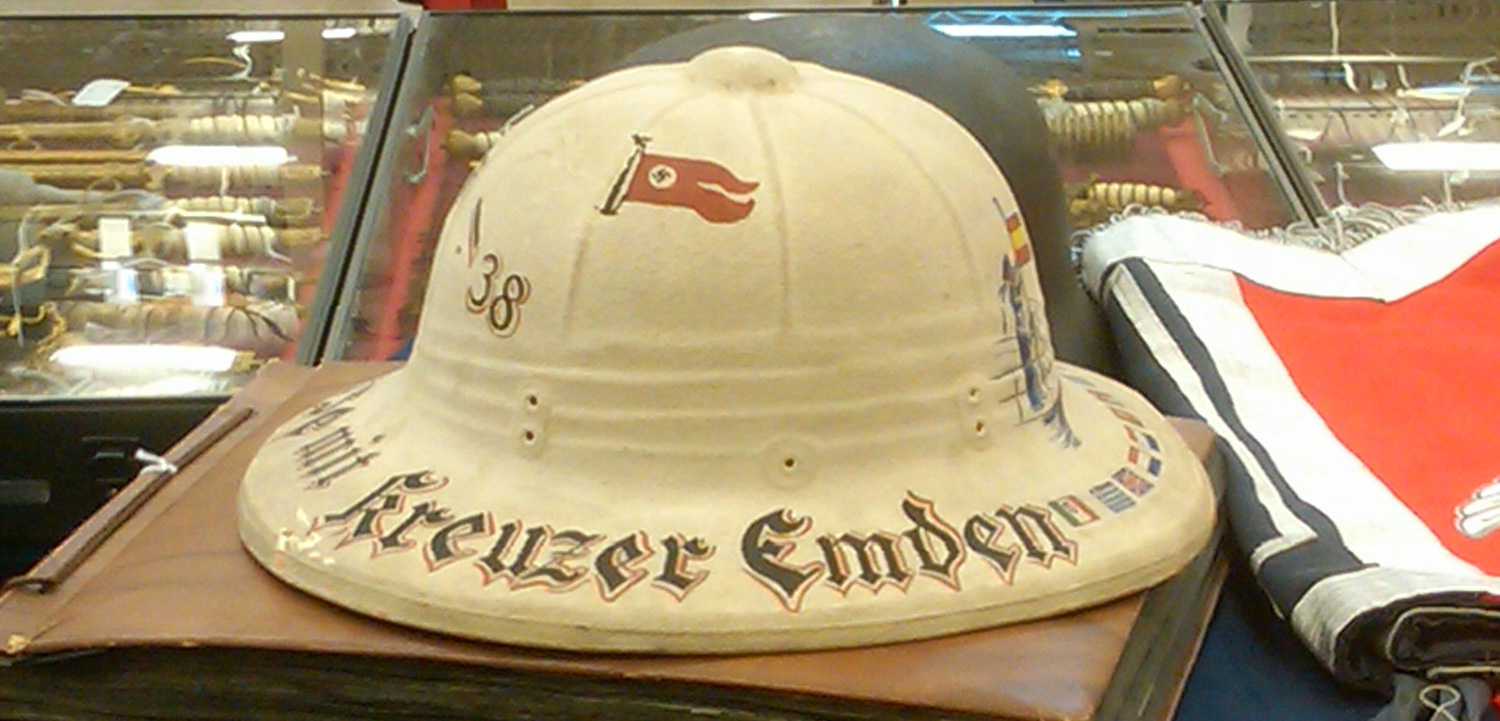 The 25th annual Military Antiques Xtravaganza (MAX) Show took place in Monroeville, outside of Pittsburgh. This 1,500 table show is one of the two largest shows in North America and attracted dealers from around the world. As with past years there was far too much to see, but here is a recap of the sights of the 2012 MAX Show. Continue reading
The 25th annual Military Antiques Xtravaganza (MAX) Show took place in Monroeville, outside of Pittsburgh. This 1,500 table show is one of the two largest shows in North America and attracted dealers from around the world. As with past years there was far too much to see, but here is a recap of the sights of the 2012 MAX Show. Continue reading
The Last Kaiser’s Other Tropical Attire
This author previously noted that the collection of Kaiser Wilhelm II’s private uniforms at Huis Doorn included a mystery helmet that appears to be British; a helmet that he may have never wore in any official capacity. However, the last Kaiser of Germany did in fact wear a bombastic tropical uniform in his visit to Palestine in 1898 (shown above at the Temple Mount in Jerusalem).
While, this doesn’t explain how the apparent British six-panel colonial pattern helmet came to be a part of Willie’s personal items at Doorn, it does show that he was prepared for any occasion, including a visit to the Holy Land in German tropical attire. Continue reading

